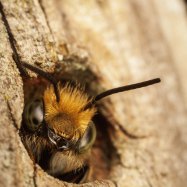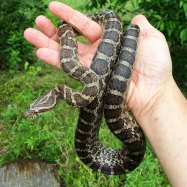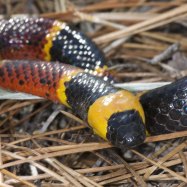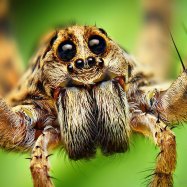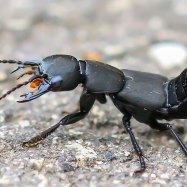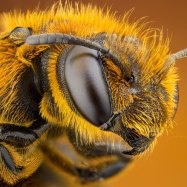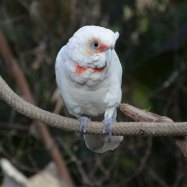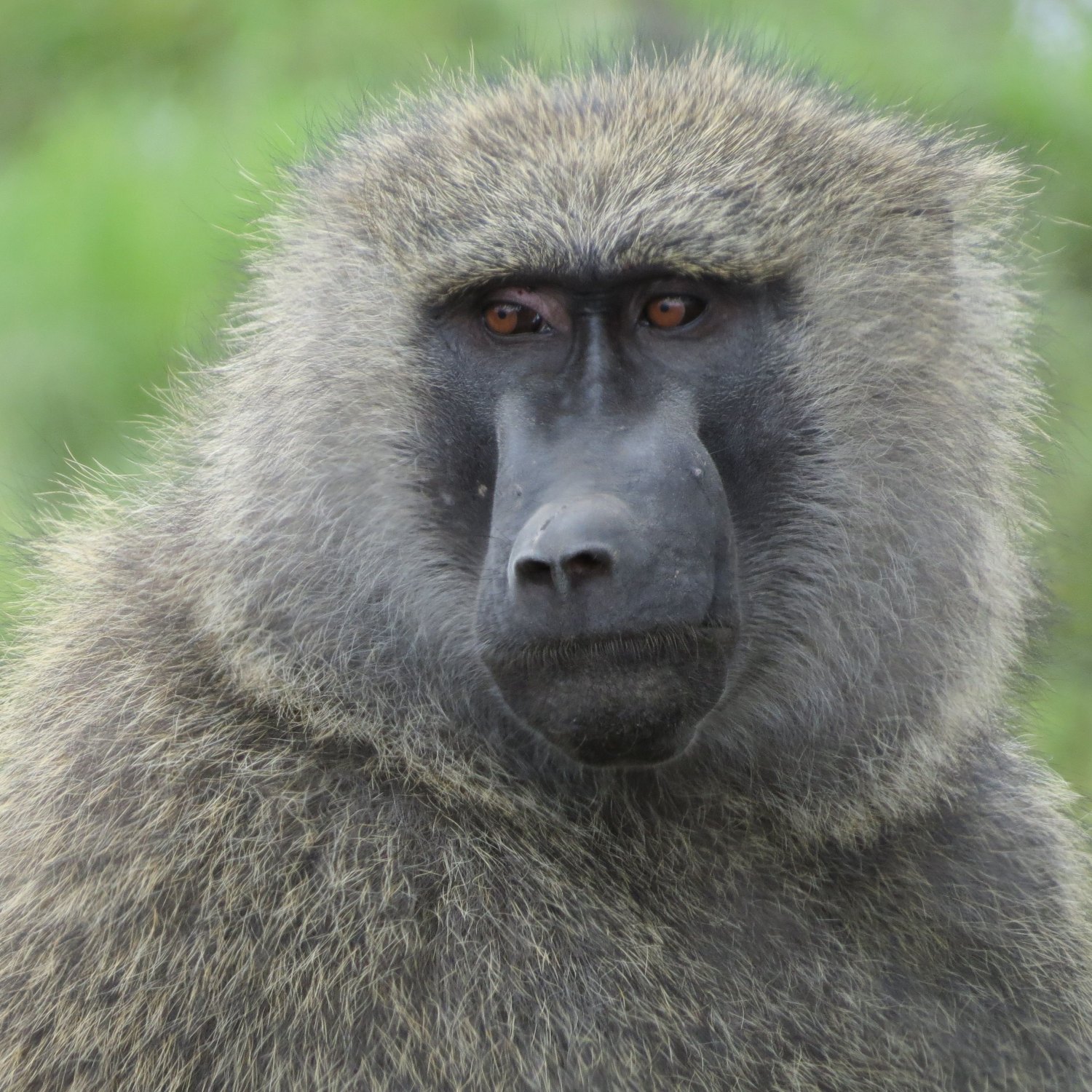
Baboon
50 to 115 cm
Baboons are medium to large-sized, stocky animals found in sub-Saharan Africa. They belong to the Cercopithecidae family and can reach lengths of 50 to 115 cm. Known for their distinctive cheek pouches and diverse social behaviors, these intelligent animals are a must-see on any African safari. Don't miss the chance to witness these charismatic creatures in their natural habitat. #Baboons #SubSaharanAfrica #Cercopithecidae #AnimalFacts #WildlifeEncounter
Animal Details Summary:
Common Name: Baboon
Kingdom: Animalia
Habitat: Savannas, grasslands, and forests
The Fascinating World of Baboons: From Savannas to Forests
Baboons, with their unique appearance and distinctive personalities, have long captured the fascination and curiosity of humans. These primates belong to the genus Papio and are commonly referred to as baboons. They can be found in various countries across Africa and Arabia, mainly inhabiting savannas, grasslands, and forests.But what exactly makes baboons so intriguing and special? In this article, we will dive into the world of baboons and explore their habitat, feeding habits, physical attributes, and their role in the animal kingdom Baboon.
Baboon Classification and Distribution
Before we delve deeper into the world of baboons, let's understand their classification within the animal kingdom. Baboons belong to the kingdom Animalia, phylum Chordata, mammalia class, and the order Primates. Within the primate order, they belong to the family Cercopithecidae, along with other species such as macaques and guenons.Baboons are widely distributed throughout Africa and Arabia, with various species inhabiting different parts of the continent. Their geographical distribution includes countries such as Angola, Sudan, Ethiopia, Zambia, and Tanzania, among others. They can also be found in the Arabian Peninsula, in countries like Saudi Arabia and Yemen.
Habitat and Adaptations
Baboons are highly adaptable animals, able to thrive in various habitats, including savannas, grasslands, and even forests. This adaptability is partly due to their omnivorous diet, which allows them to find food in different environments.In savanna and grassland habitats, baboons can be found foraging for a wide range of food sources, including fruits, seeds, insects, and small vertebrates Basset Fauve De Bretagne. They are also known to scavenge for food and even hunt small animals, making them versatile and resourceful creatures.
In comparison, baboons in forest habitats have different adaptations. Due to the dense vegetation, they tend to have a more arboreal lifestyle, spending a significant amount of time on trees. They have strong and dexterous limbs, enabling them to climb confidently and quickly among trees. This adaptation also helps them escape predators on the ground.
Diversity in Physical Appearance
When it comes to physical appearance, baboons are easily recognizable, with their distinctive features and unique coloration. They have a medium to large stocky body, with a length ranging from 50 to 115 cm and a weight of 10 to 30 kg. Their body shape and size may vary slightly among different species, but they all share similar physical traits.Baboons typically have a brown or gray coat, with areas of white or yellow on their face, chest, and buttocks. The color of their coat can also change depending on their age, health, and exposure to sunlight. Male baboons are generally larger and have a more muscular build than females. They also have large canine teeth, which serve as a display of dominance and also aid in defense and competition for mates.
Social Structure and Behavior
One of the most intriguing aspects of baboons is their complex social structure and behavior. They live in large groups, called troops, which can consist of up to hundreds of individuals. These troops are hierarchically structured, with the alpha male at the top of the social ladder, followed by high-ranking females and lower-ranking males.Within the troop, baboons form strong social bonds and have a sophisticated communication system. They use vocalizations, such as grunts and barks, as well as facial expressions, to communicate with each other. They also groom each other, reinforcing social bonds and creating a sense of community within the troop.
Baboons are known for their intelligent and social nature, displaying a wide range of behaviors and emotions, including compassion, empathy, and even a sense of humor. They also have a strong sense of family, with females typically staying in their natal troop for their entire life.
Role in the Ecosystem
As with any species, baboons play a significant role in maintaining balance and functioning within their ecosystem. Being omnivorous, they contribute to the dispersal and germination of plant seeds and assist in controlling insect populations. As opportunistic feeders, they also aid in the decomposition of carcasses, helping to recycle nutrients in the ecosystem.Moreover, as primates, baboons are closely related to humans and play a crucial role in scientific research. They are often used as a model for understanding primate social behavior, cognitive abilities, and diseases.
Conservation Status and Threats
Despite their adaptability and widespread distribution, baboons face various threats in the wild, leading to their declining numbers in some areas. These threats include habitat loss due to human encroachment, poaching, and disease outbreaks.Baboons are also often seen as pests, especially in areas where they come into close contact with humans. Conflict with humans over resources can lead to retaliatory killings or capture for use in the illegal pet trade.
As a result, several species of baboons, such as the hamadryas baboon and olive baboon, are listed as "Least Concern" on the IUCN Red List, while others, like the Guinea baboon, are considered "Vulnerable."
The Future of Baboons
Despite the challenges that baboons face, there is hope for the future of these fascinating creatures. Conservation efforts, such as protected areas and laws against poaching and illegal trade, have been put in place to ensure the survival of baboon populations.Additionally, research and education about the importance of baboons in the ecosystem and their welfare are crucial in promoting their conservation. As responsible and conservation-minded individuals, we can also play our part in ensuring a bright future for baboons by respecting their natural habitat and being mindful of our actions.
In conclusion, baboons are much more than just common primates found in Africa and Arabia. Their adaptability, social behavior, and role in the ecosystem make them a complex and intriguing species that is worth studying and protecting. So next time you see a baboon, take a moment to marvel at their unique features and contemplate their significance in the natural world.

Baboon
Animal Details Baboon - Scientific Name: Papio
- Category: Animals B
- Scientific Name: Papio
- Common Name: Baboon
- Kingdom: Animalia
- Phylum: Chordata
- Class: Mammalia
- Order: Primates
- Family: Cercopithecidae
- Habitat: Savannas, grasslands, and forests
- Feeding Method: Omnivorous
- Geographical Distribution: Africa and Arabia
- Country of Origin: Various countries in Africa
- Location: Sub-Saharan Africa
- Animal Coloration: Mostly brown or gray with areas of white or yellow
- Body Shape: Medium to large-sized, stocky
- Length: 50 to 115 cm
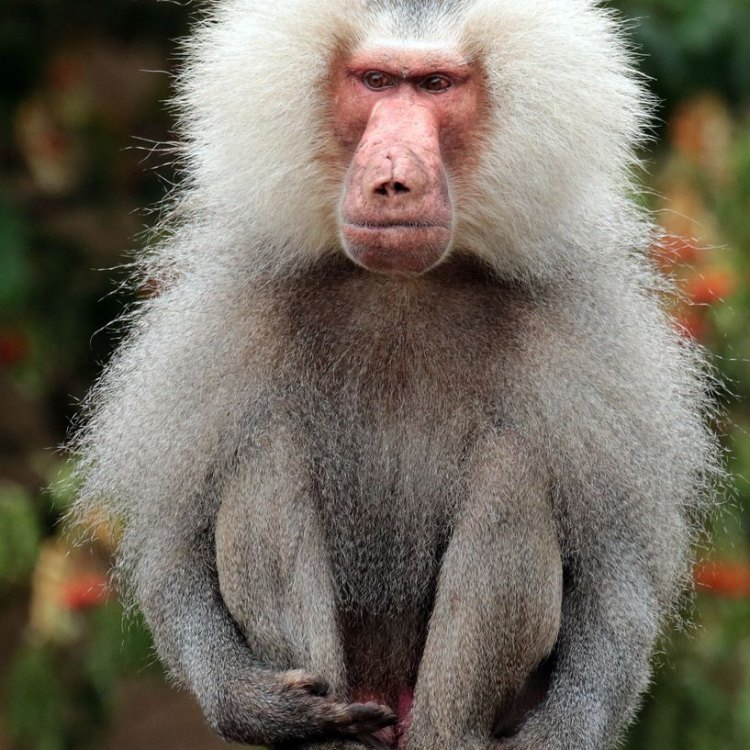
Baboon
- Adult Size: 40 to 100 kg
- Average Lifespan: 20 to 30 years
- Reproduction: Sexual
- Reproductive Behavior: Polygamous
- Sound or Call: Loud vocalizations, including barks, screams, and grunts
- Migration Pattern: Non-migratory, but may move within their habitats
- Social Groups: Live in troops with complex social hierarchies
- Behavior: Highly social and intelligent
- Threats: Habitat loss, hunting, pet trade
- Conservation Status: Depends on the species, some are listed as least concern, while others are endangered
- Impact on Ecosystem: Important for seed dispersal and controlling insect populations
- Human Use: Meat hunting, traditional medicine, and use in research
- Distinctive Features: Prominent, dog-like muzzle and long, sharp canines
- Interesting Facts: Baboons are some of the largest non-human primates and are known for their complex social structures
- Predator: Large carnivores such as lions, leopards, and hyenas
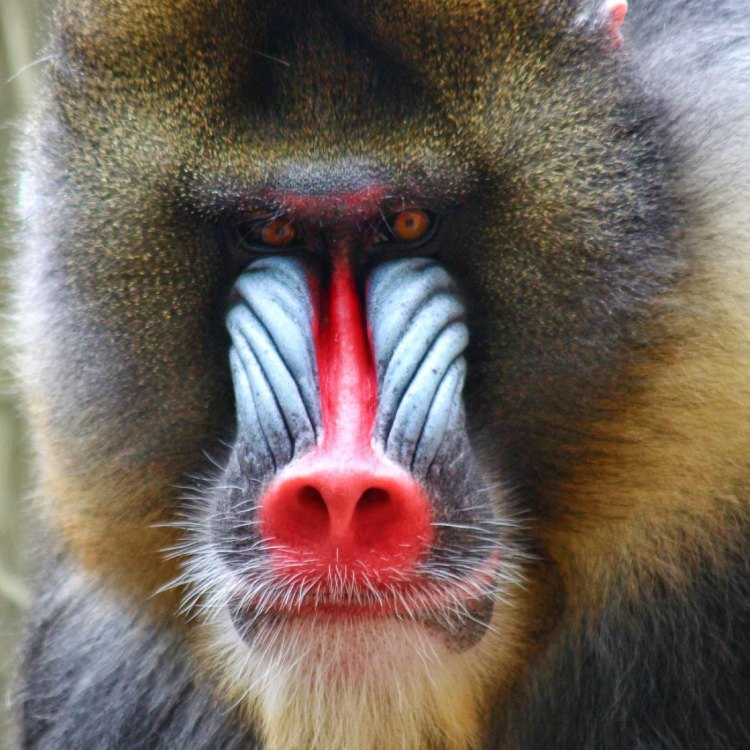
Papio
The Fascinating World of Baboons: From Complex Social Structures to Vital Ecosystem Role
When we think of primates, our minds may automatically go to familiar faces like chimpanzees or gorillas. However, there is one primate species that stands out with its unique features and intriguing behavior – the baboon. These highly social and intelligent creatures have captured the attention of researchers and nature enthusiasts alike for their complex social hierarchies, vocalizations, and distinctive dog-like appearance. Today, we will take a deeper dive into the world of baboons and explore their interesting features, behavior, and role in the ecosystem PeaceOfAnimals.Com.Meet the Primate: Adult Size, Lifespan, Reproduction, and Behavioral Traits
Baboons belong to the genus Papio and are native to various parts of Africa and the Arabian Peninsula. Depending on the species, their adult size ranges from 40 to 100 kg, making them one of the largest non-human primates. Their average lifespan in the wild is between 20 and 30 years, and they reach sexual maturity around 4 to 6 years old.Reproduction in baboons is sexual, meaning they rely on a male and female to mate and produce offspring. However, their reproductive behavior is polygamous, meaning the males may mate with multiple females within their troop. This behavior is linked to their complex social structures, where dominance plays a significant role.
Speaking of their behavior, baboons are highly social creatures and live in troops with complex hierarchies. These troops can consist of anywhere from a few dozen to over 200 individuals, and each individual holds a specific rank within the group. These ranks are established through a variety of behaviors, including aggressive displays and fights, with the dominant individuals at the top of the hierarchy receiving the most social and reproductive privileges Brookesia Micra.
Baboons are also known for their highly intelligent behavior, which is evident in their problem-solving abilities and the use of tools to forage for food. They have been observed using sticks to gather termites from their mounds or using stones to crack open hard nuts. These behaviors showcase their adaptability and resourcefulness in their natural habitats.
The Sounds of Baboons: Vocalizations and Communication
One of the most defining features of baboons is their loud vocalizations, which include barks, screams, and grunts. These vocalizations serve as a means of communication within the troop and can convey a wide range of emotions, from warning others of potential threats to expressing frustration or excitement.In addition to vocalizations, baboons also use a variety of body language and facial expressions to communicate with each other. For example, a submissive baboon may crouch down, exposing their teeth and looking away, while a dominant baboon may stand tall and make direct eye contact to assert their dominance.
Factors Threatening Baboons: Habitat Loss, Hunting, and the Pet Trade
As with many other animal species, baboons face numerous threats in their natural habitats, including habitat loss, hunting, and the pet trade. The rapidly growing human population and consequent expansion of urban areas have led to significant habitat loss for baboons. This loss of habitat not only affects the baboons but also has a ripple effect on the ecosystem as a whole.Additionally, baboons are hunted for their meat and used in traditional medicine practices in some African cultures. These activities, combined with the illegal pet trade, have led to a decline in baboon populations and in some cases, have put certain species at risk of extinction.
The Conservation Status of Baboons and Their Impact on Ecosystems
The conservation status of baboons varies depending on the species. Some, like the Chacma baboon, are listed as least concern by the International Union for the Conservation of Nature (IUCN). However, other species, such as the Olive baboon, are considered endangered due to their shrinking habitats and low population numbers caused by human activities.Baboons may not be the first species that come to mind when we think of vital roles in ecosystems. However, these primates play a crucial role in maintaining the balance of their habitats. As omnivores, they consume a variety of plants and animals, making them important for seed dispersal and controlling insect populations. Without baboons, there could be a significant imbalance in the ecosystem, which could have far-reaching consequences.
Human Use of Baboons: From Meat Hunting to Research
While baboons are primarily wild animals, they have been utilized by humans for various purposes throughout history. In some cultures, they are considered a source of meat, with their meat being a delicacy in some parts of Africa. They are also used in traditional medicine practices, where their body parts are believed to possess healing properties.In addition to these traditional uses, baboons have also been used in scientific research. Their intelligence and close relation to humans make them valuable subjects for studying behavior, genetics, and disease.
Distinctive Features and Interesting Facts About Baboons
Aside from their complex social structures and vocalizations, baboons stand out for their distinctive appearance. They have a prominent, dog-like muzzle and long, sharp canines that they use for protection and to establish dominance within their troops. These features, combined with their colorful bottoms, make baboons easily recognizable.Here are a few more interesting facts about baboons that you may not have known:
- Baboons are one of the few animals, along with chimpanzees, to recognize their own reflection in a mirror.
- They have a highly developed vocalization system, with some individuals being able to recognize up to 30 specific sounds.
- Baboons have a strict hierarchy within their troops, with females at the top and males at the bottom, challenging the notion of male dominance in the animal kingdom.
- They are excellent climbers and spend the majority of their time on the ground and in trees. However, they can also swim and have been known to dive into water to escape predators.
Predators of Baboons: An Important Role in the Food Chain
Like any other animal, baboons have their fair share of predators in the wild. Large carnivores such as lions, leopards, and hyenas are their main predators, with smaller predators such as snakes and eagles also posing a threat. However, baboons have developed various defense mechanisms, such as their sharp canines, agility, and group protection, to defend themselves against these predators.While predators may seem like a threat to baboons, they play an important role in maintaining a healthy food chain. In turn, baboons also benefit the ecosystem by controlling insect populations and spreading seeds.
In Conclusion
Baboons are not just fascinating creatures to observe, but they also play a significant role in the ecosystems they inhabit. As intelligent and highly social primates, they have captured the attention of researchers and continue to intrigue us with their complex behavior and unique features. However, as with many other animal species, baboons face numerous threats, making conservation efforts crucial in ensuring their survival for future generations. By understanding these incredible animals and their impact on the ecosystem, we can work towards protecting and preserving their habitats for years to come.
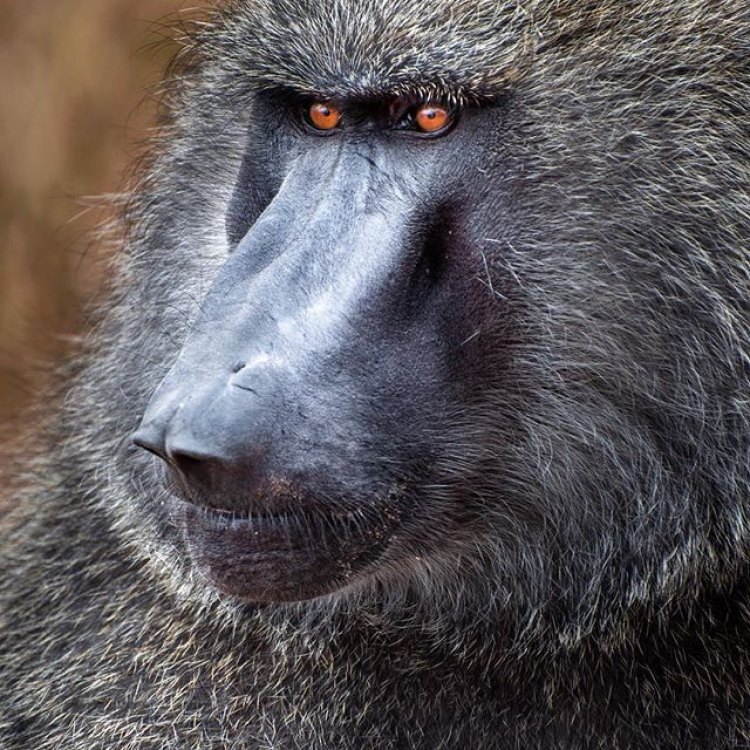
The Fascinating World of Baboons: From Savannas to Forests
Disclaimer: The content provided is for informational purposes only. We cannot guarantee the accuracy of the information on this page 100%. All information provided here may change without prior notice.

